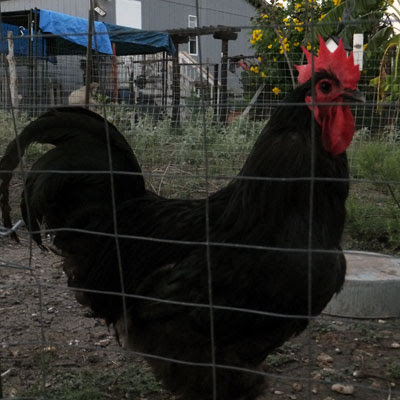Welsummers
Facts
Every
morning as a kid I ate cornflakes and I never knew the Kellogg's Corn
Flake Rooster, "Cornelius" was a Welsummer. I do remember thinking he
was such a wonderful rooster.
Named after the village of Welsum, this
Dutch breed has in its make-up such breeds as the Partridge Cochin,
Partridge Wyandotte, Partridge Leghorn and still later the Barnevelder
and the Rhode Island Red. In 1928, stock was imported into this country
from Holland, in particular for its large brown egg, which remains its
special feature, some products being mottled with brown spots. The dark
brown pigment of the egg can actually be rubbed off as it is added at
the end of the egg laying sequence. Welsummers have their own
distinctive markings and color, and fit nicely into the light breed
category, although it has good body-size. The colorful Welsummer has an
upright stance with a strong, short beak, broad back, full breast and
large full tail. It has a small single comb and medium wattles. The skin
and shanks are yellow. The almond-shaped earlobes are red, and the eyes
are reddish bay. While the standard color is red partridge, the male
plumage is quite different from the plumage of the females. The saddle,
head and neck of the male are golden brown; the back, wing front and
wing bows are bright reddish brown. The female’s feathers have a
distinctly lighter shaft, and each back feather is reddish brown, dotted
with black. The breed was admitted to the American Standard of
Perfection in 1991. There are 3 varieties, Silver Duckwing, gold and
black-red partridge. Judges and breeders work to a standard that values
indications of productiveness, so that laying merits can be combined
with beauty.
Interesting facts about Welsummers
- Welsummer
chickens are purported to be one of the top free-range foragers of all
the layers and lay more eggs than Marans. They lay a large rich brown
Terra cota colored egg.
- Pullet eggs average 1.96 oz (55.5 g)
just a hair shy of the USDA "large" classification of 2.00 oz. Eggs from
adult hens consistently hit the large and extra large USDA weights. The
hens lay around 160 eggs per year.
- Chicks are strong and are easily sexed as females have much darker head and back markings than males.
- They lay fewer eggs during the winter.
- They are friendly, easily handled birds which love to free range and forage for food but can also be kept in runs quite happily.
- They do go broody but not usually until late spring but are not particularly good mothers.
- They are productive for 3 years of their 9 year lifespan.























